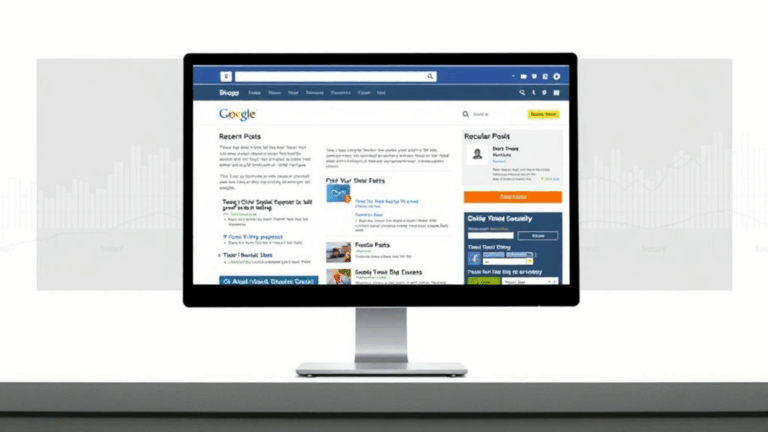Blogger Labels Can Actually Wreck Your Content Discovery If You Let Them
Understanding How Blogger Labels Actually Work
If you’re still thinking of Blogger labels as tags or categories from WordPress, that’s the first trap. Labels on Blogger are more like internal Post-it notes. They don’t live inside a taxonomy. They aren’t queryable with wildcards. There’s no hierarchy. They are just flat metadata values dumped into post markup. And they carry through into your RSS feed, which can be both useful and terrible depending on what you’re doing with third-party integrations.
I ran into this janky behavior a few years back when I thought I was being clever by labeling all my movie reviews with review, movies, and entertainment. A month later my feed to an aggregator I barely remembered setting up was flooding their system with duplicate category pings. Turns out, Blogger outputs each label as a separate atom:category tag in full RSS, which some older feed consumers treat like filters or triggers. Bug? Feature? Honestly, who knows.
Also—labels are case-sensitive. Calling one post “Featured” and another “featured” creates two labels. There’s no UI-level enforcement or deduplication. So if you change keyboard habits mid-year, you end up with phantom taxonomies unless you clean it all manually via search-and-edit. (You’re not going to do that.)
The Label Cloud Is Not Your Friend
The label cloud widget seems helpful until you realize how aggressively it rewards noisy content strategy. If you’ve labeled every post with 3–5 things casually over the years, that cloud quickly turns into a memory dump of your indecisiveness. Even worse, it operates alphabetically and by frequency, so the entire logic of visual hierarchy is misleading.
I spent an hour trying to debug why traffic from a high-performing tag dropped. Turns out I’d added that label to fewer posts over time to avoid cluttering categories… which meant it dropped down the cloud and ultimately off the widget due to display cap limits. Nobody could click it anymore, and I didn’t notice because I had too many active labels bleeding into the cloud.
Quick sanity check tips:
- If you’re using more than ~15 unique labels, the cloud is already useless to new visitors.
- Avoid turning labels into other content types (e.g., making ‘interview’ a label—just create a page or dedicated archive).
- Repetitive singular/plural pairs (“tip” vs “tips”) are a common landmine. Pick one.
- Some template scripts auto-cap size of cloud. Check hidden spans in dev tools for dropped labels.
Redirects, Custom Domains, and Broken Label Paths
If you’re running Blogger on a custom domain (props, it’s a grief ritual), your label URLs stay at that domain—but only if the http/https config is airtight. The moment your SSL cert hiccups or the www/root paths don’t sync up, /search/label/YourLabel links silently fail to load content, especially on third-party templates that rely on AJAX page loading or lazy permalink fetchers.
I had one blog that auto-redirected to the canonical domain unintentionally via a service worker injected by AMP pages (I know, wtf). That caused label archive pages to short-circuit mid-load. The network tab showed 302s everywhere, and a bunch of Uncaught TypeError: Cannot read property 'innerHTML' of null errors. Had to dig through archive.js in the theme and kill the redirect override logic to fix it.
The workaround: test your label pages manually in incognito with JS blocked and sniff the source once. If the posts aren’t hard-loaded into initial HTML, you’re dependent on JS scripts that might break under certain redirect chains or template forks.
Using Labels to Power Hidden Dynamic Pages
This is one of the overlooked uses of labels that actually kinda rules: creating pseudo-static content hubs by linking directly to label-based search results and styling them as pages. For instance, create a label called “+resources”—the plus makes it URL-safe—and then link to /search/label/%2Bresources from your navbar with a matching title. It feels like a permanent section of your site, even though it’s dynamic.
Bonus hack: since Blogger search URLs accept ?max-results=X, you can simulate pagination or batch content sections:
/search/label/tools?max-results=6
This trick really saved me when trying to build a portfolio section without using any third-party CMS junk. But heads up—Google sometimes translates ‘+’ as space during mobile redirect paths, which can break your pseudo-page name. So always test them logged in and logged out—yes, the behavior differs.
Inheriting Label Behavior from Imported Posts
If you ever import old posts via XML or API, beware: labels can get injected inconsistently. Blogger’s import process treats <category> nodes as labels, but if your export had multi-dimensional categories (like those in WordPress), the labels often include slashes, colons, or nested paths like “tech/code/js”. Blogger doesn’t normalize these—it treats the full path string as one label.
I once imported about 200 posts from an old dev blog just to unify two audiences. Forgot to scrub the labels beforehand. Now I have tags like “projects/2018/arduino” sitting in the cloud with exactly one post under them. No UI method to delete them either—you have to manually edit the one post and remove the label. Worse: some templates render ‘/’ as a directory path, so the URL to the label page 404s because it assumes nested folders that don’t exist.
An undocumented edge case: if you edit the label from inside the HTML of the post (not via UI), you can force Blogger to not re-encode slashes, which messes up the archive again after saving. The platform doesn’t sanitize label input hidden inside data:post.labels blocks.
Tagging Strategy That Doesn’t Make You Hate Past You
At this point, labels are either clogging up your layout or being completely ignored. If you still want to use them as long-term discovery helpers (especially for internal recirculation, not SEO), here’s what’s worked reasonably well for me over the years:
- Stick to nouns. Avoid gerunds or verb phrases like “explaining”, “learning”, “reviewed”.
- Use lowercase consistently. Avoid the urge to capitalize for aesthetics.
- Predefine a core set of 7 to 12 labels that map to actual recurring topics, not just moods or genres.
- Only apply 1–2 labels per post. It forces intentionality and avoids taxo-bloat.
- If a post doesn’t cleanly fit into that core set, don’t label it. Let it stay uncategorized.
- Hidden labels (like those starting with underscore) can help you segment posts silently, useful if using the Blogger JSON feed for external calls.
Oh, and if you really want to view your label usage sanity, go open the JSON feed of your blog’s default atom feed and look for "category" entries. That was the moment I realized how unhinged my label naming had become over the years.
Things Blogger Seems to Index, But Then Randomly Doesn’t
Huge quirk: Google Search sometimes shows label archive pages (like /search/label/tools) right next to the actual post URLs, and sometimes drops them entirely. There doesn’t seem to be a consistent indexing pattern here. I’ve had label pages rise in search rankings, grab clickthroughs for broad terms, and then vanish overnight once the crawl budget shifted to my homepage.
What’s weirder: if you remove every post under a specific label, the label page still stays published with an empty container unless you manually delete the label from the template or force a 404. And Google can still index that empty URL for weeks. There’s no robots.txt exclusion for label paths by default, and the sitemap doesn’t include them anyway, so you’re in this weird limbo where label pages are half-visible to crawlers depending on how the theme outputs them.
“Why is /search/label/design showing up as a top page in Search Console if I haven’t linked to it in two years?”
Because somewhere deep in your footer or an uncached sidebar, that link persisted. And if you’re using dynamic page loading, Googlebot might have snapshot it during one render pass. There is literally no way to predict label page indexing unless you manually test the bot behavior per crawl cycle.














